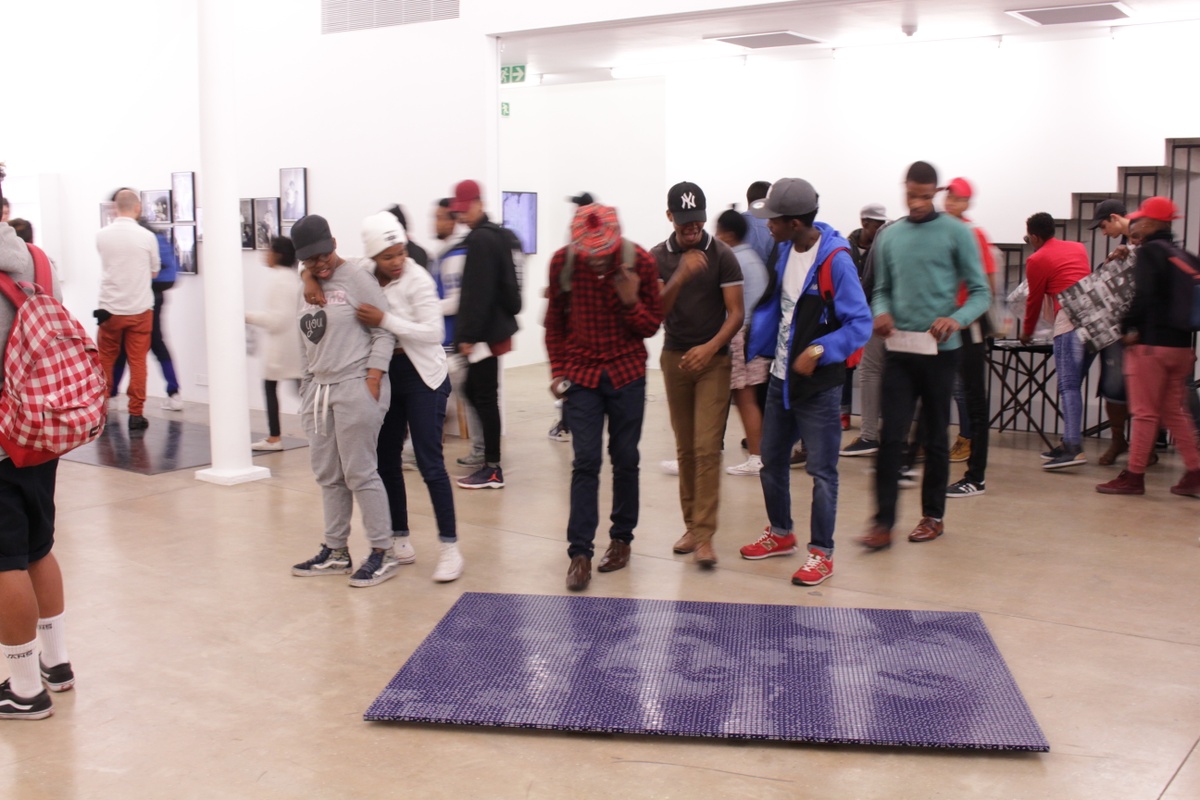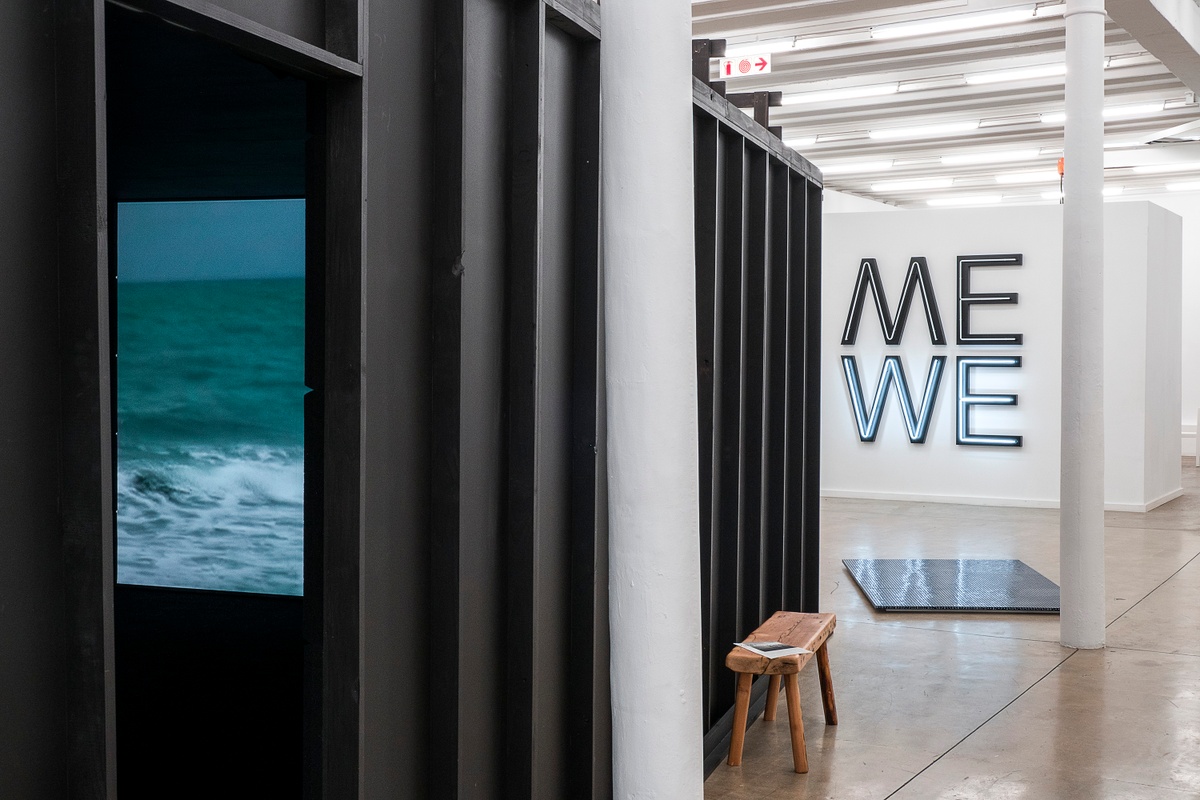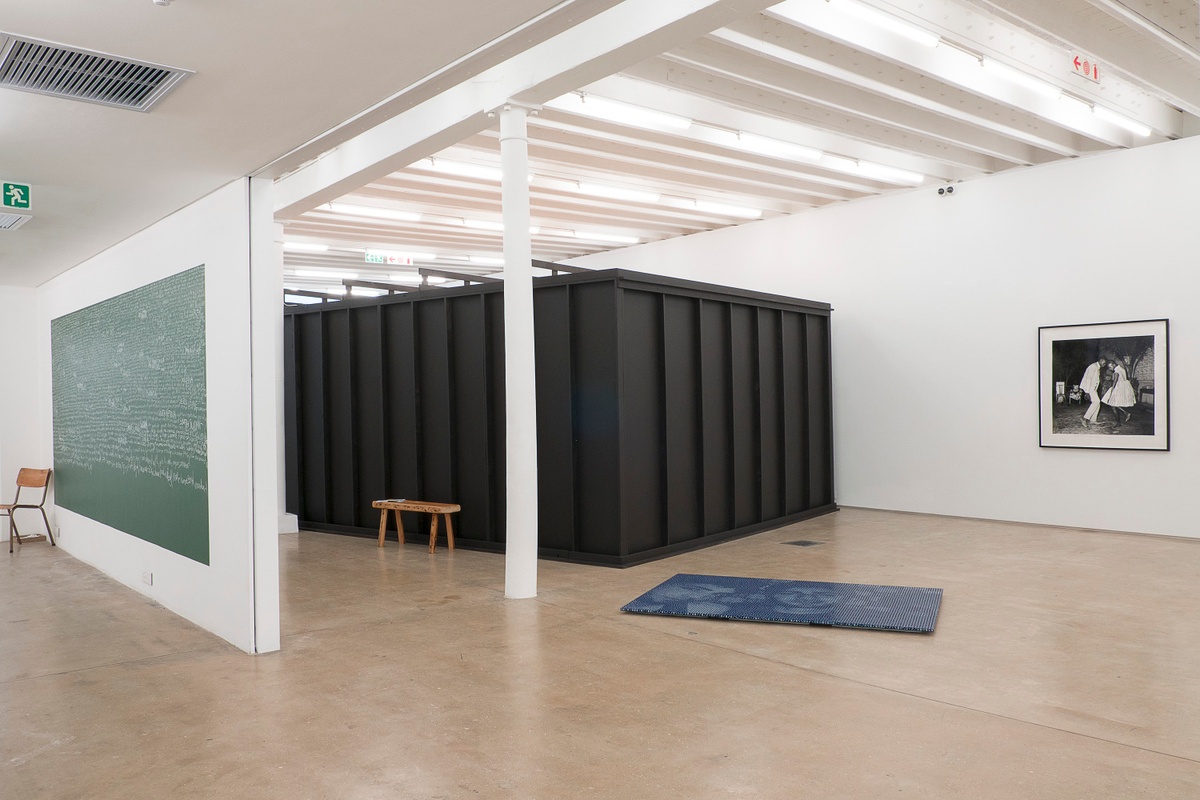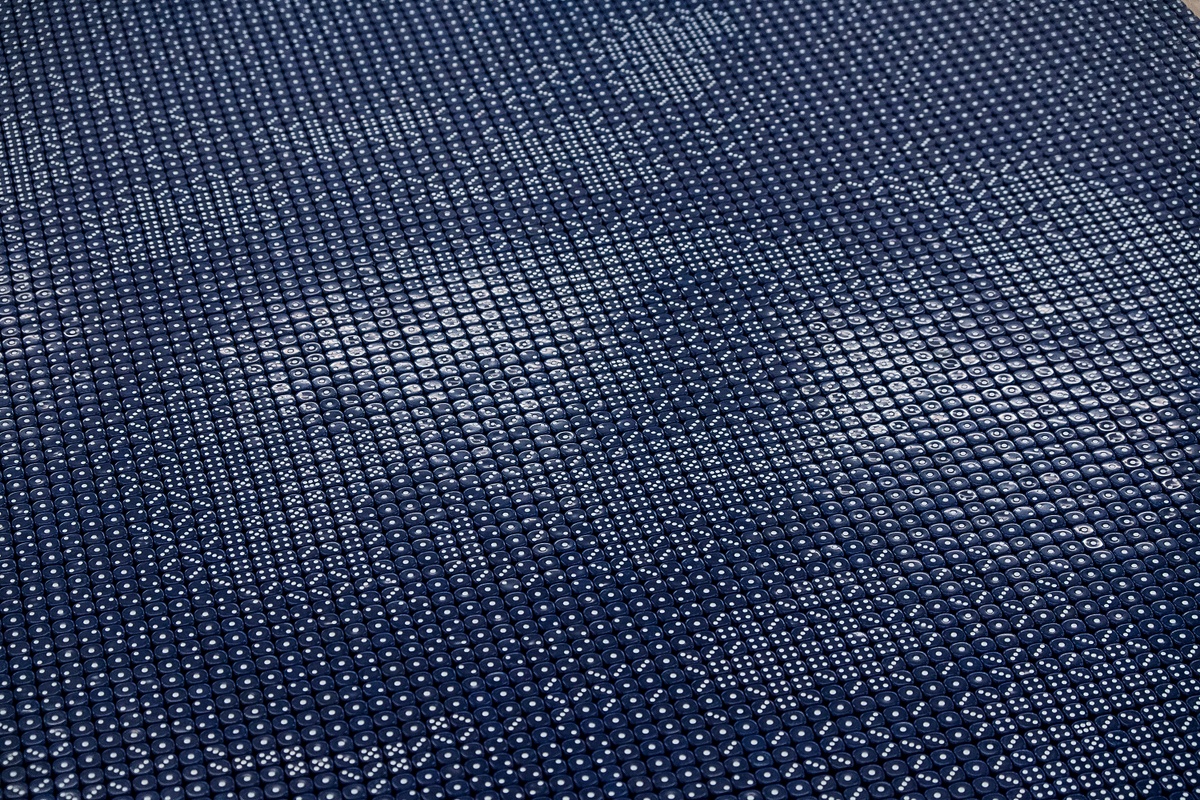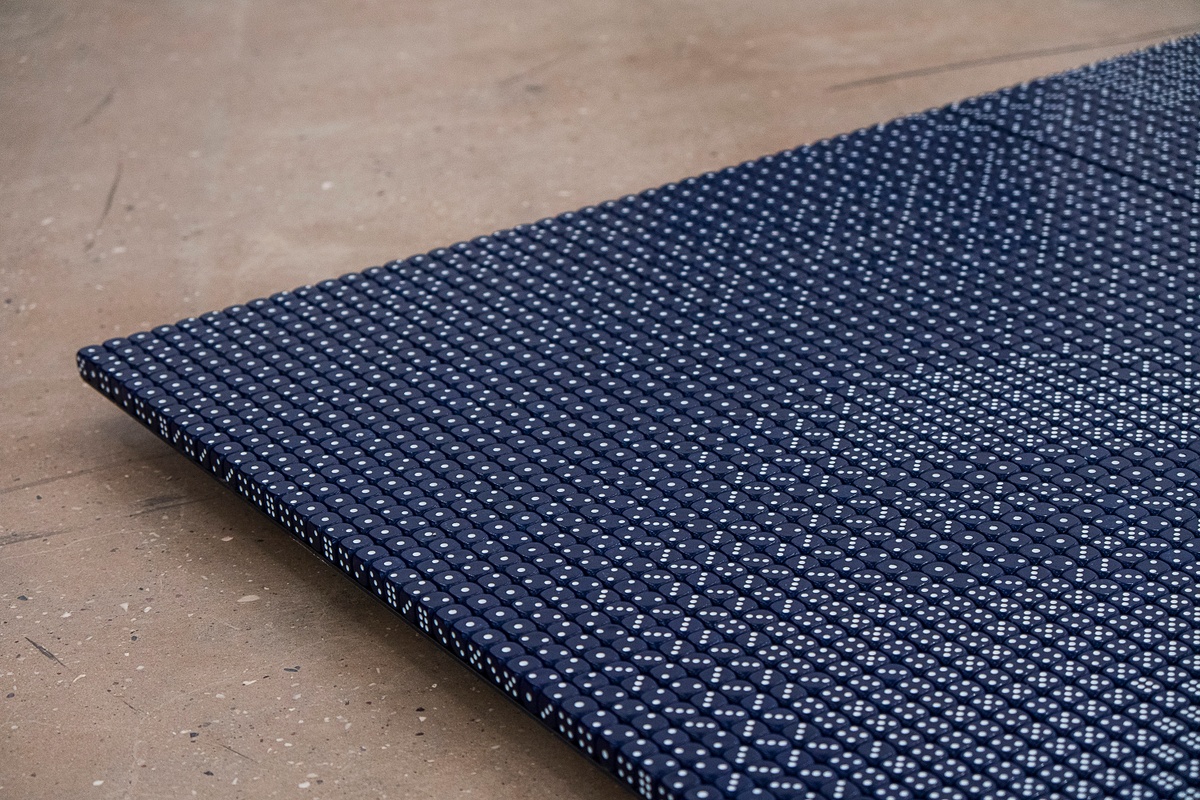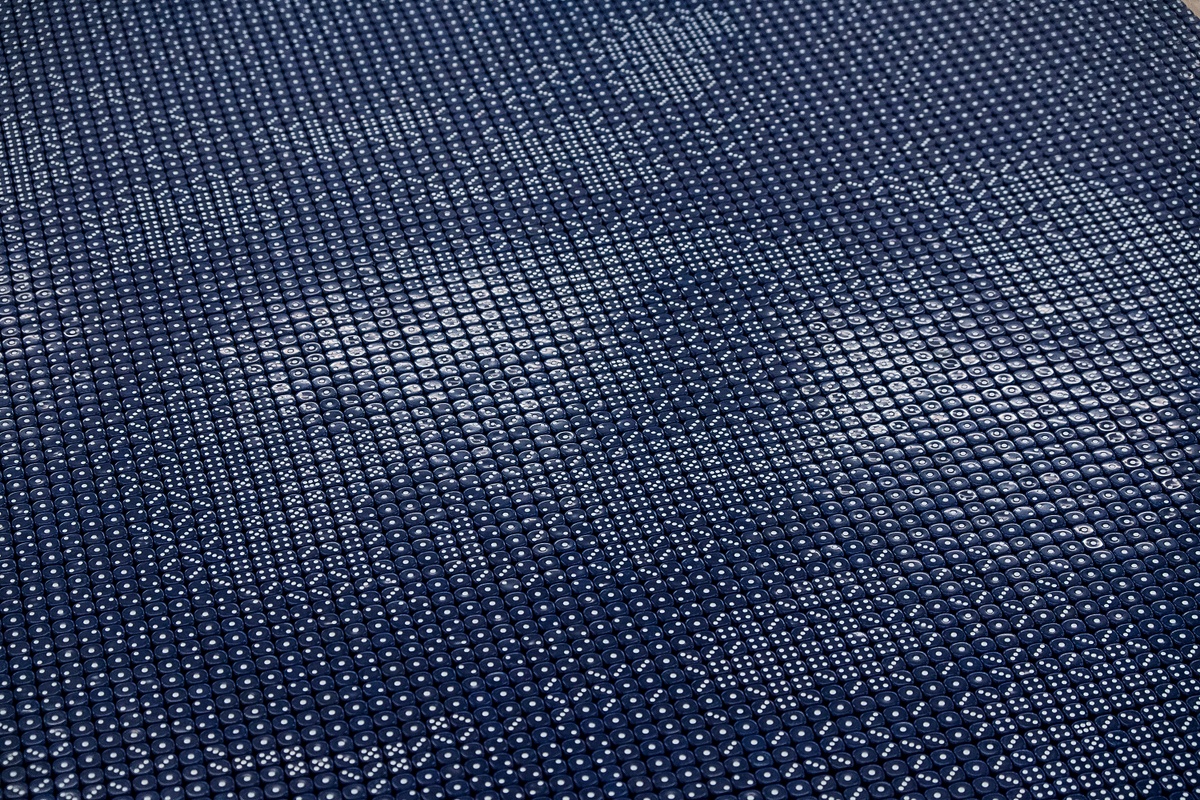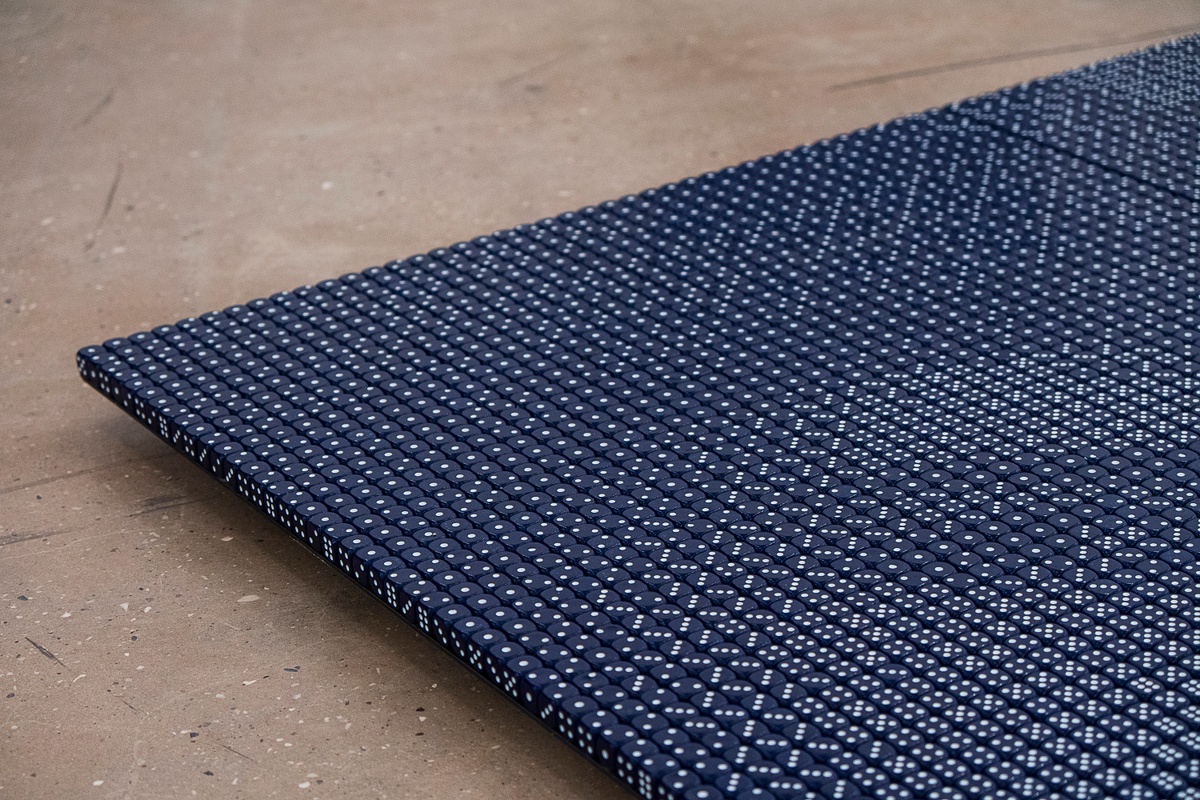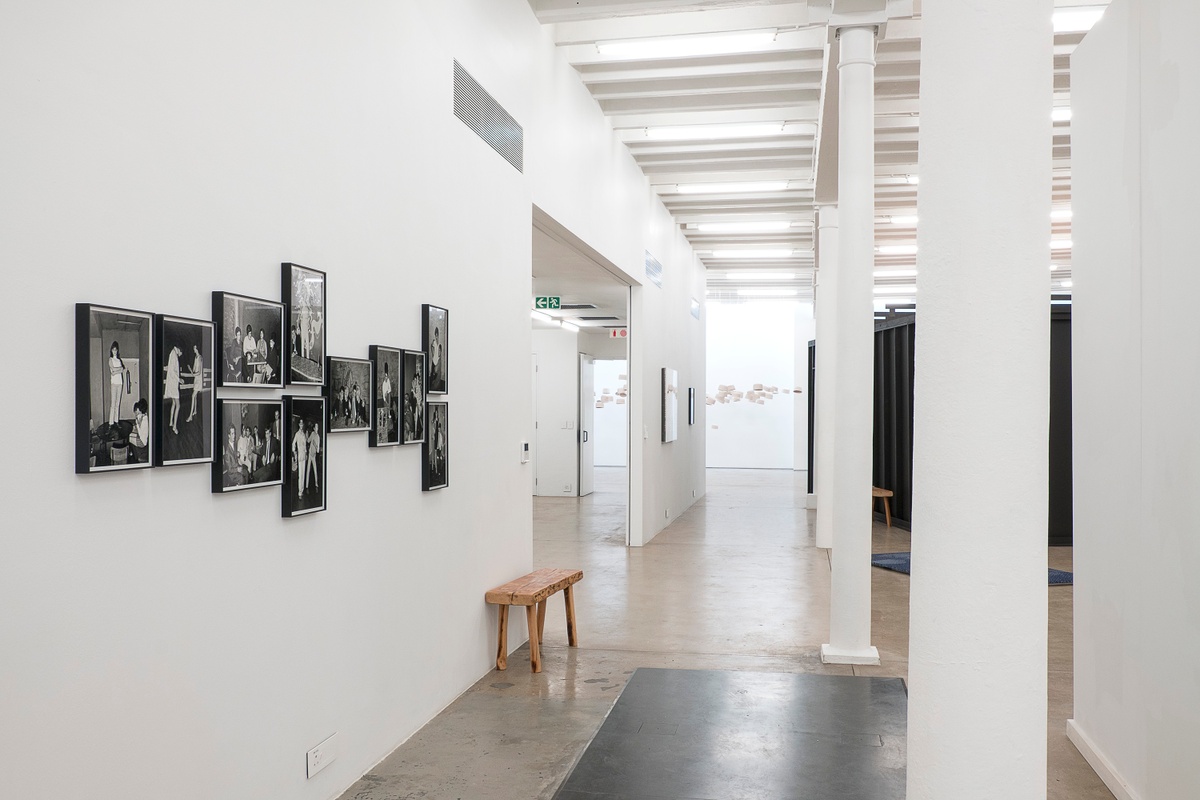Pierre Fouché
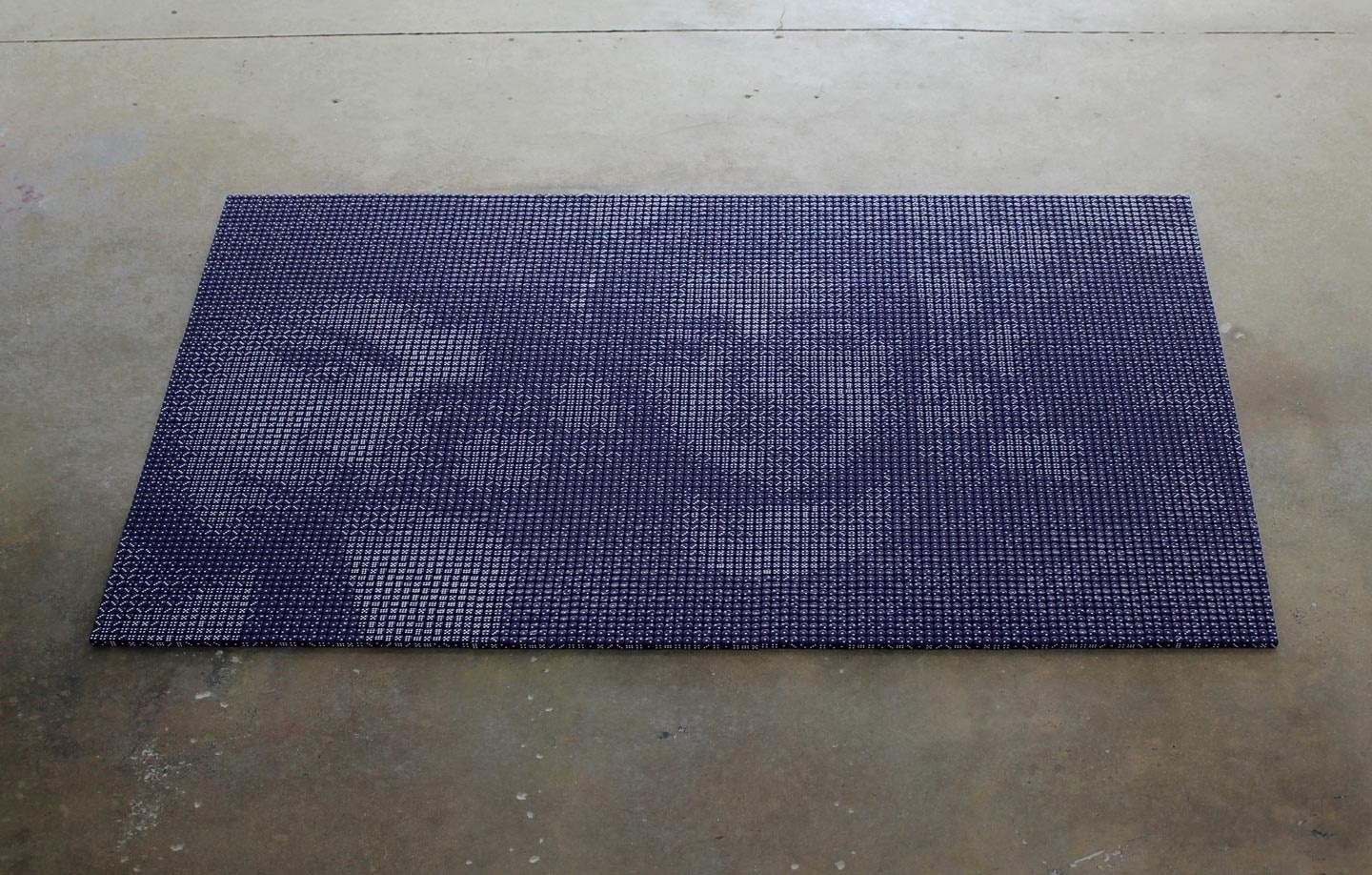
Made from ten thousand indigo dice, Fouché’s Mahmoud & Ayaz is an imagined portrait of two Iranian youth. The work is named for Mahmoud Asgari and Ayaz Marhoni, both executed in 2005 by the Islamic Republic of Iran on charges widely believed to be a smoke-screen for state-mandated homophobia. Fouché’s intimate image, which appears as a snapshot taken up close, offers a tender counterpoint to the photographs of the pair’s public hanging. What if the dice had rolled a double? The artist asks. What if the two had evaded arrest? In death, “a Romeo and Juliet glow has come upon them –” journalist Philip Kennicott writes of Mahmoud and Ayaz – “two young people killed because of the cruelty and ignorance of an unjust world.”
b.1977, Pretoria
Working silk and patience into compositions of knotted thread, Pierre Fouché transcribes scenes of fragile desire in lace. In expanding the gendered history of his technique and the 'women’s work' of needlecraft, the artist finds in lace a medium sympathetic to his subject. At once decorative and figurative, his images of young men – lovers, friends, strangers – are rendered with a pictorial intricacy. Each references a photograph, taken or found, which evokes for the artist “the voyeur’s particular form of anguish” – the pleasure of looking and the denial of touch. That lace is made as much of holes as thread lends to his work an immaterial lightness. To the artist, lacework is less a discipline of resigned commitment than one of quiet resistance. “I find the non-gridded, near-chaotic potential of free lace techniques exhilarating as a craftsman,” Fouché says. “This slow and mindful anarchy is an ideal methodology for the more poetically-inclined activist.” While lacework remains his primary preoccupation, the artist’s formal engagement with figuration and adornment finds expression across diverse mediums, from paint to puzzle pieces.
